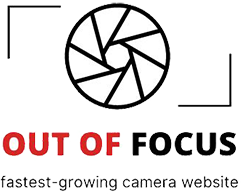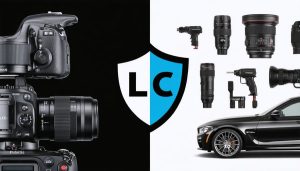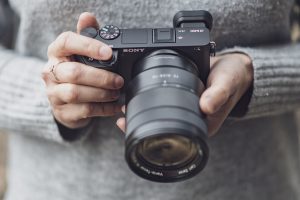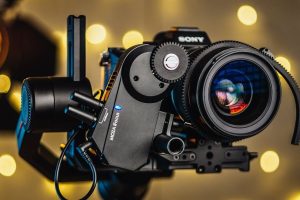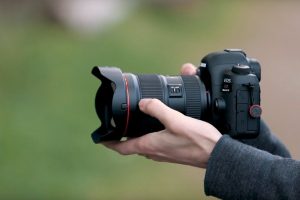
Financial mastery in photography demands more than just understanding apertures and lighting – it requires strategic doctoral-level planning to transform your creative passion into a thriving business empire. As both a photographer and financial strategist, I’ve witnessed countless talented artists struggle with the complex balance between artistic excellence and fiscal responsibility.
Doctorate-level financial planning for photographers encompasses sophisticated investment strategies, tax optimization frameworks, and business scaling methodologies that extend far beyond basic bookkeeping. Whether you’re managing multiple studio locations, coordinating destination shoots, or building a photography education empire, this advanced approach to financial management serves as the cornerstone of sustainable success in our competitive industry.
The intersection of creative vision and financial acumen creates unique challenges that traditional financial planning often fails to address. From managing irregular income streams and seasonal fluctuations to valuing intellectual property and planning for technological evolution, photographers require specialized financial strategies that align with the distinctive nature of their business.
This comprehensive guide delves into advanced financial planning concepts specifically tailored for photography professionals, combining academic rigor with real-world application. We’ll explore sophisticated wealth-building strategies while maintaining the artistic integrity that drives your passion, ensuring your creative legacy remains both culturally impactful and financially rewarding.
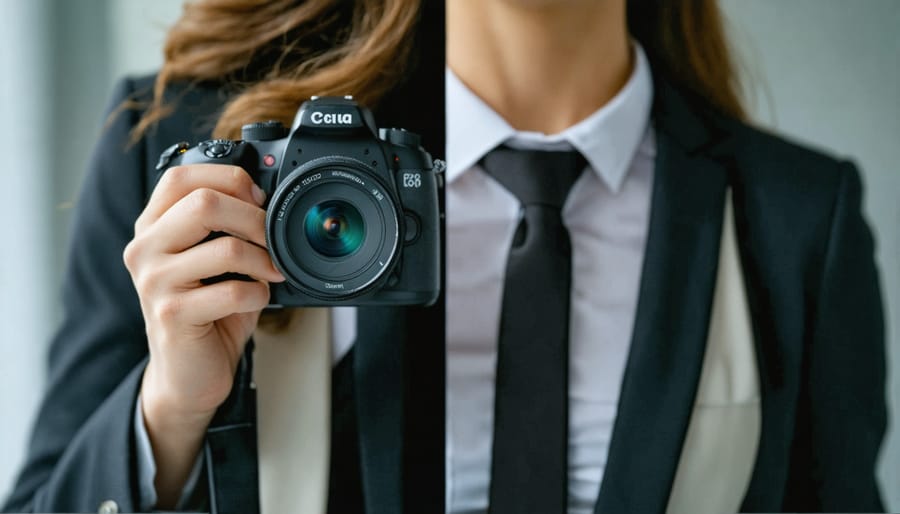
Building Your Photography Business Foundation
Business Structure and Tax Planning
Understanding the tax implications of different business structures is crucial for photographers aiming to optimize their financial planning. Your choice of business entity significantly impacts your tax obligations and financial flexibility. Let’s explore the most common options and their implications.
As a photographer, familiarizing yourself with business structure requirements is your first step toward building a solid financial foundation. Sole proprietorships offer simplicity but leave you personally liable for business debts. LLCs provide liability protection while maintaining tax flexibility, making them popular among photographers.
S-corporations can help reduce self-employment taxes but require more complex managing business finances and strict compliance with IRS regulations. For larger photography studios, C-corporations offer the strongest liability protection but face double taxation on profits and dividends.
Each structure has unique tax deduction opportunities. For instance, LLCs and S-corps can deduct equipment purchases, studio rent, and marketing expenses differently. That’s why engaging in professional tax planning early on can save you significant money in the long run. Consider factors like your business size, growth plans, and personal tax situation when choosing your structure. Remember, you can change your business structure as your photography business evolves, but timing these changes strategically is crucial for tax efficiency.
Revenue Stream Diversification
Building a sustainable photography business requires more than just relying on client photoshoots. Smart photographers understand the importance of developing multiple revenue streams to create financial stability and growth potential. Think of it as creating different tributaries that flow into your main income river.
Traditional photography services can be complemented with educational offerings such as workshops, online courses, or one-on-one mentoring sessions. These not only provide additional income but also position you as an expert in your field. Stock photography, while competitive, can generate passive income over time when approached strategically with high-quality, marketable images.
Consider developing physical or digital products related to your expertise. This might include presets, templates, or photography guides. Print sales, whether fine art or commercial, can be another lucrative avenue, especially when you develop relationships with galleries or interior designers.
Commercial licensing of your images for advertising, publishing, or corporate use often commands higher rates than consumer photography. Additionally, affiliate marketing through gear reviews and recommendations can provide supplementary income, though it’s essential to maintain authenticity and only recommend products you genuinely trust.
Diversification isn’t just about creating multiple income streams; it’s about building a resilient business that can weather market changes and seasonal fluctuations. The key is to identify opportunities that align with your expertise and brand while meeting genuine market needs.
Investment Strategies for Photographers

Equipment Investment vs. Financial Investment
As photographers, we often face a unique challenge in balancing our desire for new equipment with the need for sound financial investments. While that latest mirrorless camera or premium lens might promise to elevate your work, it’s crucial to approach gear purchases with the same strategic mindset as traditional financial investments.
Consider the depreciation factor: Camera equipment typically loses value over time, while well-planned financial investments have the potential to grow. A good rule of thumb is to allocate your resources using the 70/30 principle: 70% towards financial investments (retirement accounts, diversified portfolios, or business development) and 30% towards equipment that directly generates income.
Before making any major equipment purchase, ask yourself three key questions:
1. Will this purchase directly increase my earning potential?
2. Can I rent this equipment for specific jobs instead?
3. How long will it take to recover this investment through client work?
Many successful photographers maintain a hybrid approach. For instance, instead of buying every new lens release, they might invest in one versatile professional lens while putting the saved money into market investments or their business emergency fund. This strategy provides both the tools needed for current work and financial security for the future.
Remember that certain financial investments offer tax advantages that equipment purchases don’t. While you can depreciate camera gear on your taxes, retirement accounts and certain business investments might provide more substantial long-term benefits. Consider consulting with a financial advisor who understands the unique needs of creative professionals to develop a balanced investment strategy.
Don’t fall into the gear acquisition syndrome trap. Instead, build a sustainable equipment upgrade cycle that aligns with your business growth while maintaining a robust financial investment portfolio. This balanced approach ensures both your creative capabilities and financial future remain secure.
Retirement Planning for Creative Professionals
Retirement planning for photographers requires a unique approach that balances creative industry dynamics with long-term financial security. As a photographer, your income may fluctuate seasonally, and traditional retirement vehicles might not always align with your business model. That’s why it’s crucial to seek specialized wealth management expertise that understands the creative professional’s journey.
Consider establishing a SEP IRA or Solo 401(k), which offer higher contribution limits and flexibility perfect for self-employed photographers. These retirement vehicles allow you to contribute more during high-earning seasons and adjust during slower periods. Additionally, diversifying your retirement portfolio beyond photography-related investments helps protect against industry-specific downturns.
One effective strategy is to create multiple income streams that can continue generating revenue even in retirement. This might include:
– Building a stock photo portfolio that generates passive income
– Creating photography courses or educational content
– Licensing your image collection
– Developing passive income through print sales
Digital asset management becomes crucial as you approach retirement. Consider how your image library can become a valuable asset, potentially providing ongoing royalties or becoming part of your succession plan. Many successful photographers transition their businesses into teaching roles or consulting positions, creating a gradual shift into retirement rather than an abrupt change.
Insurance planning is equally important. Look into long-term disability insurance and business overhead coverage to protect your income-generating ability. Consider how your equipment investments can be leveraged or liquidated as part of your retirement strategy.
Remember to regularly review and adjust your retirement plan as your photography business evolves. Market changes, technological advances, and shifting client preferences can all impact your long-term financial strategy. Working with a financial advisor who understands creative professionals can help ensure your retirement plan remains aligned with both your artistic vision and financial goals.
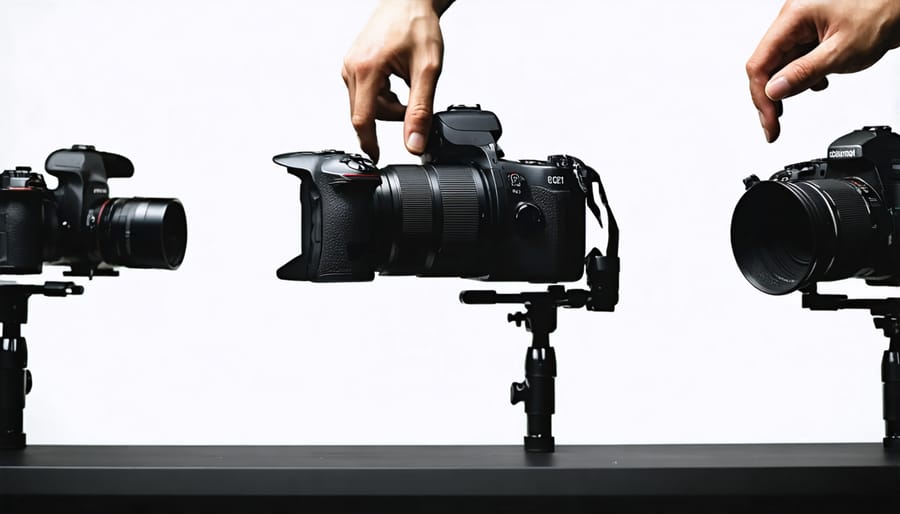
Risk Management and Insurance
Professional Insurance Coverage
As a professional photographer, protecting your business with comprehensive insurance coverage is crucial for long-term financial stability. Several key insurance types deserve careful consideration to safeguard your career and assets.
Professional liability insurance, also known as errors and omissions (E&O) insurance, should be your first priority. This coverage protects you against claims of professional mistakes, missed shots at important events, or client dissatisfaction with your work. For wedding photographers especially, this coverage is non-negotiable.
Equipment insurance is equally vital, covering your expensive cameras, lenses, lighting gear, and computers against theft, damage, or loss. Consider scheduling specific high-value items separately to ensure adequate coverage. Many photographers opt for inland marine insurance, which protects gear while in transit or on location shoots.
General liability insurance protects against third-party claims of bodily injury or property damage. This becomes essential when shooting in client homes, renting studio space, or working at event venues. Many venues actually require proof of this coverage before allowing you to work on their premises.
Business interruption insurance helps replace lost income if you’re unable to work due to covered perils, such as natural disasters or equipment theft. This coverage can be crucial for maintaining financial stability during unexpected downtime.
Consider cyber liability insurance if you store client images digitally or process online payments. This protects against data breaches and helps cover costs associated with recovering compromised client information.
Finally, if you employ assistants or studio staff, workers’ compensation insurance isn’t just recommended – it’s often legally required. This coverage protects both you and your employees in case of work-related injuries or illnesses.
Emergency Fund Planning
As a photographer running your business, income can be unpredictable. Wedding seasons peak, corporate events cluster around certain months, and landscape photography opportunities might depend on weather conditions. That’s why building a robust emergency fund is crucial for your financial stability.
A good rule of thumb is to maintain 6-12 months of essential expenses in an easily accessible account. However, for photographers, consider extending this to 12-18 months due to the seasonal nature of the business. This buffer helps you navigate through slow periods without compromising your business operations or personal financial obligations.
Start by analyzing your income patterns over the past few years. Identify your peak seasons and quiet periods, then calculate your average monthly expenses, including both business and personal costs. Include essential items like equipment insurance, studio rent, software subscriptions, and personal living expenses.
Consider keeping your emergency fund in a high-yield savings account that offers better interest rates while maintaining liquidity. Avoid the temptation to invest these funds in high-risk vehicles – the goal here is preservation, not growth.
Build your fund gradually by allocating a percentage of your income during peak seasons. Many successful photographers set aside 20-30% of their earnings during busy months to prepare for leaner times. This approach helps create a sustainable cycle where high-income periods support the entire year’s operations.
Remember to regularly review and adjust your emergency fund target as your business grows and expenses change. This financial buffer isn’t just about survival – it’s about maintaining the freedom to be selective with projects and maintaining your creative standards even during challenging times.

Estate Planning for Photographers
Protecting Your Creative Legacy
As a photographer, your creative work is more than just images – it’s your intellectual property and a valuable asset that needs protection. Understanding how to manage and protect your creative legacy is crucial for long-term financial success in the photography industry.
Start by registering your copyright for significant works. While copyright exists automatically upon creation, formal registration provides additional legal protection and enables you to pursue statutory damages in case of infringement. Consider establishing a systematic approach to copyright registration, particularly for commercial works or images with high licensing potential.
Create clear licensing agreements for all client work and commercial uses. These should specify usage rights, duration, and territorial limitations. Having well-documented contracts not only protects your work but also creates predictable revenue streams through licensing fees and usage rights.
Consider establishing a trust or LLC to manage your image rights, especially if you have a substantial portfolio. This structure can provide tax benefits and ensure your work continues generating income for your beneficiaries after your passing. Work with a financial advisor who understands creative industries to develop a strategy for managing your intellectual property as an asset class.
Don’t overlook digital rights management. Implement watermarking, metadata embedding, and online tracking tools to monitor and protect your images from unauthorized use. Regular audits of your online presence can help identify potential infringement and protect your revenue streams.
Remember to periodically review and update your image rights management strategy as technology and market conditions evolve. Your creative legacy is a valuable asset that can continue providing returns long into the future with proper protection and management.
Business Succession Planning
Planning for the future of your photography business is crucial, whether you’re thinking about retirement, career transition, or creating a legacy. A well-structured succession plan ensures your business continues to thrive even after you step away from the camera.
Start by determining your desired exit timeline and strategy. Common options include selling to another photographer, transferring to a family member, or gradually transitioning to a trusted employee. Each path requires different preparation and financial considerations.
If selling is your goal, focus on making your business attractive to potential buyers. Document your workflows, maintain detailed financial records, and build a strong client base that isn’t solely dependent on your personal brand. Consider creating systems and processes that can operate without your direct involvement, making the transition smoother for new ownership.
For family transitions, have open discussions about expectations and responsibilities early on. Consider implementing a mentorship period where your successor works alongside you, learning both the creative and business aspects of running the studio. This approach helps preserve your legacy while ensuring the next generation is properly prepared.
Financial valuation is critical in succession planning. Work with professionals to determine your business’s fair market value, including tangible assets like equipment and intangible assets such as your brand reputation and client relationships. Consider structuring the transition to optimize tax implications and ensure financial security for your retirement.
Remember to protect your intellectual property and image rights during the transition. Clear agreements about the use of your portfolio and brand elements after the handover will prevent future complications and maintain your professional legacy.
As we’ve explored throughout this guide, successful financial planning for your photography business requires a comprehensive, multi-faceted approach. The key to long-term success lies in implementing these strategies systematically while remaining flexible enough to adapt to changing market conditions and personal circumstances.
Start by establishing a solid foundation with proper business structure and accounting practices. Track your income and expenses meticulously, maintain separate business and personal accounts, and regularly review your financial statements. Remember that successful photographers treat their craft as both an art and a business.
Next, focus on building multiple revenue streams through diversification. Combine client work with passive income opportunities like stock photography, online courses, or print sales. This approach not only provides financial stability but also helps weather seasonal fluctuations in the industry.
Make retirement planning a priority by setting up appropriate retirement accounts and making consistent contributions. Consider working with a financial advisor who understands the unique challenges of creative professionals to develop a customized investment strategy that aligns with your goals.
Take action today by implementing at least one new financial planning strategy from this guide. Whether it’s creating an emergency fund, reviewing your insurance coverage, or starting a retirement account, each step brings you closer to financial security. Remember, financial planning is not a one-time event but an ongoing process that requires regular attention and adjustment.
By following these guidelines and maintaining a proactive approach to your financial future, you’ll be better positioned to enjoy a successful, sustainable career in photography while building long-term wealth and security.
